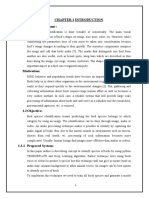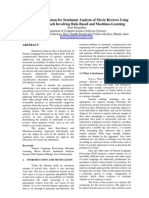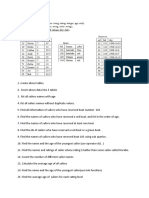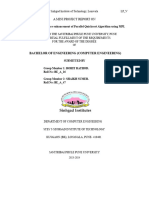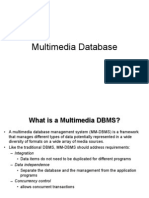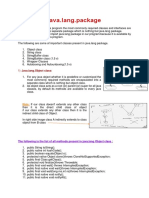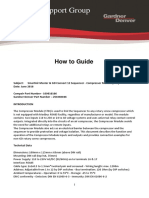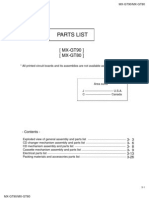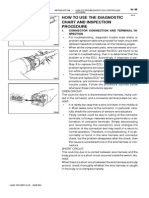0% found this document useful (0 votes)
204 views18 pagesch4 - Acquiring Audio Data PDF
The document discusses acquiring and digitizing audio signals. It explains that audio is captured using a microphone which converts sound waves to electrical signals. These analog signals are then converted to digital using an analog-to-digital converter via a process called sampling, which approximates the amplitude at regular time intervals. The samples are then stored as binary numbers. For proper reconstruction of sound, Nyquist's theorem states the sampling rate must be at least twice the highest frequency present in the original signal. Common file formats for digital audio include WAVE files and compressed MP3 files.
Uploaded by
Beulah ChristudasCopyright
© © All Rights Reserved
We take content rights seriously. If you suspect this is your content, claim it here.
Available Formats
Download as PDF, TXT or read online on Scribd
0% found this document useful (0 votes)
204 views18 pagesch4 - Acquiring Audio Data PDF
The document discusses acquiring and digitizing audio signals. It explains that audio is captured using a microphone which converts sound waves to electrical signals. These analog signals are then converted to digital using an analog-to-digital converter via a process called sampling, which approximates the amplitude at regular time intervals. The samples are then stored as binary numbers. For proper reconstruction of sound, Nyquist's theorem states the sampling rate must be at least twice the highest frequency present in the original signal. Common file formats for digital audio include WAVE files and compressed MP3 files.
Uploaded by
Beulah ChristudasCopyright
© © All Rights Reserved
We take content rights seriously. If you suspect this is your content, claim it here.
Available Formats
Download as PDF, TXT or read online on Scribd
/ 18




















